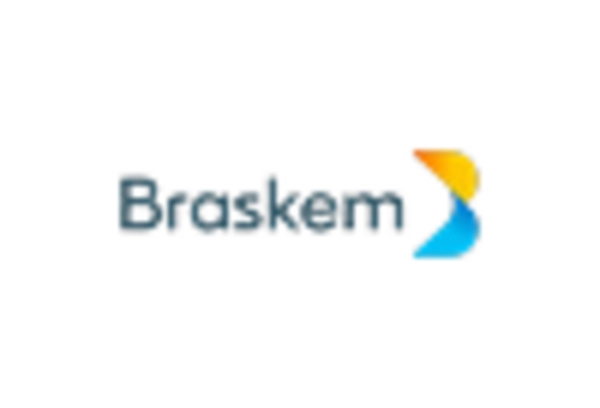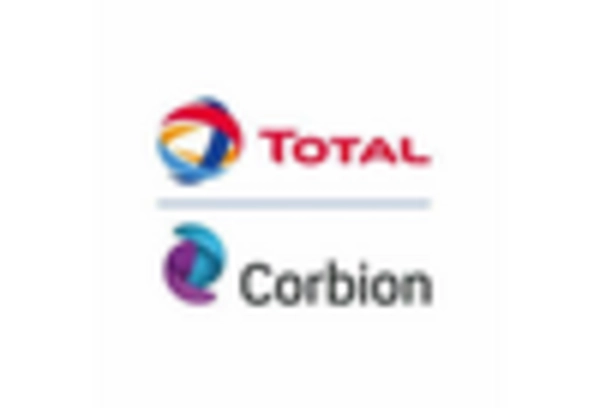Supportive Regulatory Frameworks
Regulatory support plays a crucial role in shaping the Bioplastic Composite Market. Governments worldwide are implementing policies and regulations aimed at reducing plastic waste and promoting the use of biodegradable materials. For example, several countries have introduced bans on single-use plastics, which has created a favorable environment for bioplastics. This regulatory push is expected to enhance the market potential for bioplastic composites, as manufacturers align their production processes with sustainability goals. The Bioplastic Composite Market stands to benefit from these initiatives, as they encourage investment in research and development, ultimately leading to a more robust market landscape.
Innovations in Bioplastic Technologies
Technological advancements in bioplastic production are transforming the Bioplastic Composite Market. Innovations such as improved processing techniques and the development of new biopolymers are enhancing the performance and versatility of bioplastics. For instance, advancements in blending techniques allow for the creation of composites that exhibit superior mechanical properties compared to traditional materials. This evolution is not only expanding the application range of bioplastics but also making them more competitive against conventional plastics. As a result, the Bioplastic Composite Market is likely to witness increased adoption across sectors such as automotive, packaging, and consumer goods, further driving market growth.
Rising Demand for Eco-Friendly Materials
The increasing awareness regarding environmental issues has led to a rising demand for eco-friendly materials in various industries. The Bioplastic Composite Market is experiencing significant growth as consumers and manufacturers alike seek sustainable alternatives to traditional plastics. This shift is driven by a collective desire to reduce carbon footprints and promote sustainability. According to recent data, the bioplastics market is projected to reach a value of approximately USD 20 billion by 2026, indicating a robust growth trajectory. This trend is likely to propel the Bioplastic Composite Market forward, as companies innovate to meet consumer expectations for environmentally responsible products.
Collaboration and Partnerships in Research
Collaboration among industry stakeholders, including manufacturers, researchers, and academic institutions, is fostering innovation within the Bioplastic Composite Market. These partnerships are essential for advancing research and development efforts aimed at improving bioplastic materials and their applications. By pooling resources and expertise, stakeholders can accelerate the development of new biocomposites that meet specific industry needs. This collaborative approach is likely to enhance the overall competitiveness of the Bioplastic Composite Market, as it encourages the sharing of knowledge and best practices. As a result, the market may witness a surge in innovative products that cater to diverse consumer demands.
Consumer Preference for Sustainable Products
Consumer preferences are shifting towards sustainable products, significantly impacting the Bioplastic Composite Market. As individuals become more environmentally conscious, they are increasingly opting for products made from renewable resources. This trend is evident in various sectors, including packaging, where brands are actively seeking bioplastic alternatives to meet consumer demands. Market Research Future indicates that approximately 70% of consumers are willing to pay a premium for sustainable products, which is likely to drive the growth of the Bioplastic Composite Market. Companies that prioritize sustainability in their product offerings may gain a competitive edge, further fueling market expansion.


















Leave a Comment